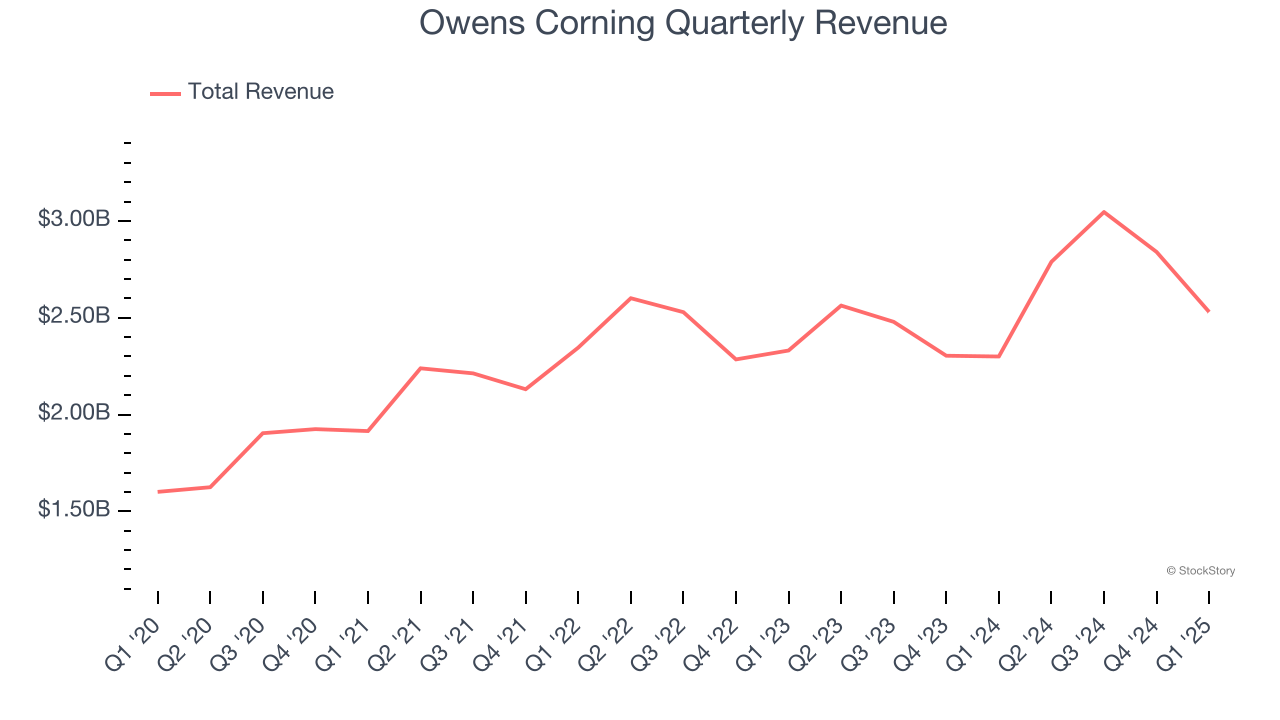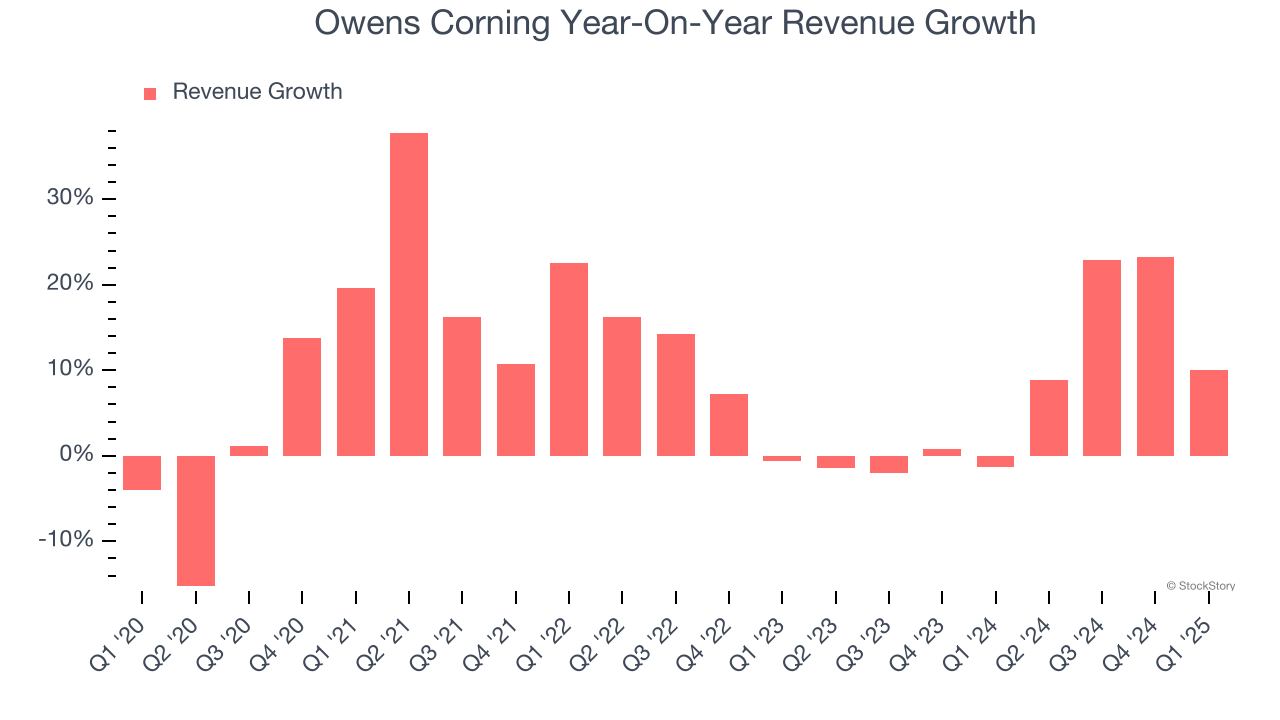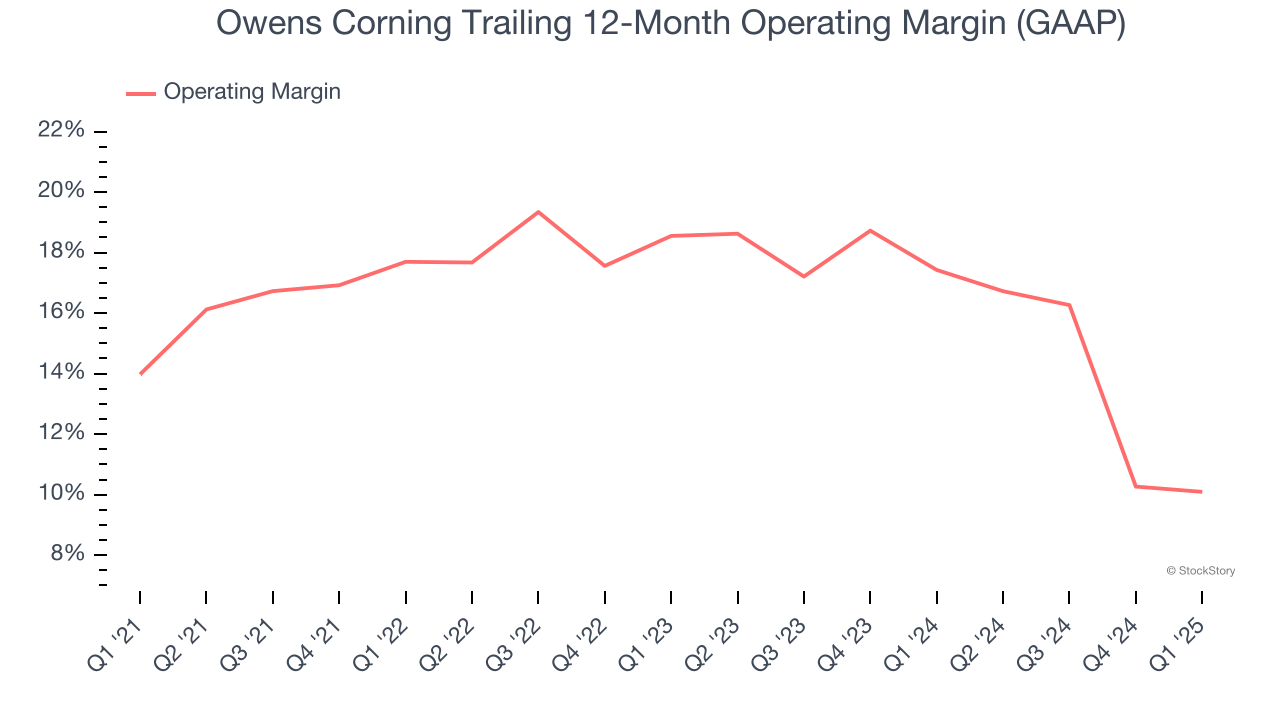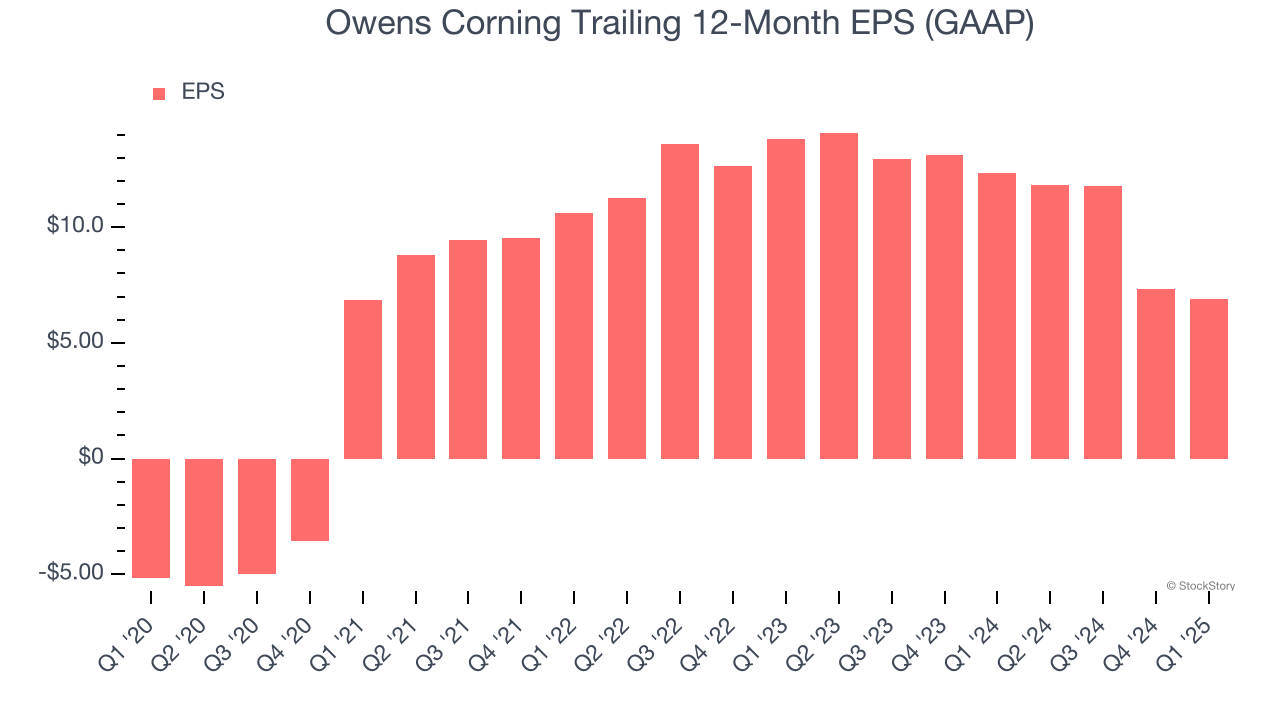
Building and construction materials manufacturer Owens Corning (NYSE: OC) reported Q1 CY2025 results exceeding the market’s revenue expectations, with sales up 10% year on year to $2.53 billion. Its GAAP profit of $2.95 per share was in line with analysts’ consensus estimates.
Is now the time to buy Owens Corning? Find out by accessing our full research report, it’s free.
Owens Corning (OC) Q1 CY2025 Highlights:
- Revenue: $2.53 billion vs analyst estimates of $2.51 billion (10% year-on-year growth, 0.7% beat)
- EPS (GAAP): $2.95 vs analyst estimates of $2.94 (in line)
- Adjusted EBITDA: $343 million vs analyst estimates of $554.2 million (13.6% margin, 38.1% miss)
- Operating Margin: 16.1%, down from 17.5% in the same quarter last year
- Free Cash Flow was -$252 million compared to -$128 million in the same quarter last year
- Market Capitalization: $12.2 billion
Company Overview
Credited with the discovery of fiberglass, Owens Corning (NYSE: OC) supplies building and construction materials to the United States and international markets.
Sales Growth
A company’s long-term sales performance is one signal of its overall quality. Any business can have short-term success, but a top-tier one grows for years. Thankfully, Owens Corning’s 9.6% annualized revenue growth over the last five years was solid. Its growth beat the average industrials company and shows its offerings resonate with customers.

We at StockStory place the most emphasis on long-term growth, but within industrials, a half-decade historical view may miss cycles, industry trends, or a company capitalizing on catalysts such as a new contract win or a successful product line. Owens Corning’s recent performance shows its demand has slowed as its annualized revenue growth of 7.2% over the last two years was below its five-year trend. 
This quarter, Owens Corning reported year-on-year revenue growth of 10%, and its $2.53 billion of revenue exceeded Wall Street’s estimates by 0.7%.
Looking ahead, sell-side analysts expect revenue to decline by 5.4% over the next 12 months, a deceleration versus the last two years. This projection is underwhelming and suggests its products and services will see some demand headwinds.
Unless you’ve been living under a rock, it should be obvious by now that generative AI is going to have a huge impact on how large corporations do business. While Nvidia and AMD are trading close to all-time highs, we prefer a lesser-known (but still profitable) stock benefiting from the rise of AI. Click here to access our free report one of our favorites growth stories.
Operating Margin
Owens Corning has been an efficient company over the last five years. It was one of the more profitable businesses in the industrials sector, boasting an average operating margin of 15.4%. This result was particularly impressive because of its low gross margin, which is mostly a factor of what it sells and takes huge shifts to move meaningfully. Companies have more control over their operating margins, and it’s a show of well-managed operations if they’re high when gross margins are low.
Looking at the trend in its profitability, Owens Corning’s operating margin decreased by 3.9 percentage points over the last five years. This raises questions about the company’s expense base because its revenue growth should have given it leverage on its fixed costs, resulting in better economies of scale and profitability.

This quarter, Owens Corning generated an operating profit margin of 16.1%, down 1.4 percentage points year on year. Since Owens Corning’s operating margin decreased more than its gross margin, we can assume it was less efficient because expenses such as marketing, R&D, and administrative overhead increased.
Earnings Per Share
Revenue trends explain a company’s historical growth, but the long-term change in earnings per share (EPS) points to the profitability of that growth – for example, a company could inflate its sales through excessive spending on advertising and promotions.
Owens Corning’s full-year EPS flipped from negative to positive over the last five years. This is encouraging and shows it’s at a critical moment in its life.

Like with revenue, we analyze EPS over a shorter period to see if we are missing a change in the business.
Sadly for Owens Corning, its EPS declined by 29.4% annually over the last two years while its revenue grew by 7.2%. This tells us the company became less profitable on a per-share basis as it expanded.
We can take a deeper look into Owens Corning’s earnings to better understand the drivers of its performance. Owens Corning’s operating margin has declined by 6.8 percentage points over the last two years. This was the most relevant factor (aside from the revenue impact) behind its lower earnings; taxes and interest expenses can also affect EPS but don’t tell us as much about a company’s fundamentals.
In Q1, Owens Corning reported EPS at $2.95, down from $3.40 in the same quarter last year. This print was close to analysts’ estimates. Over the next 12 months, Wall Street expects Owens Corning’s full-year EPS of $6.87 to grow 122%.
Key Takeaways from Owens Corning’s Q1 Results
It was good to see Owens Corning narrowly top analysts’ revenue expectations this quarter. On the other hand, its EBITDA missed significantly. Overall, this quarter could have been better. The stock remained flat at $141.79 immediately following the results.
Owens Corning underperformed this quarter, but does that create an opportunity to invest right now? The latest quarter does matter, but not nearly as much as longer-term fundamentals and valuation, when deciding if the stock is a buy. We cover that in our actionable full research report which you can read here, it’s free.

